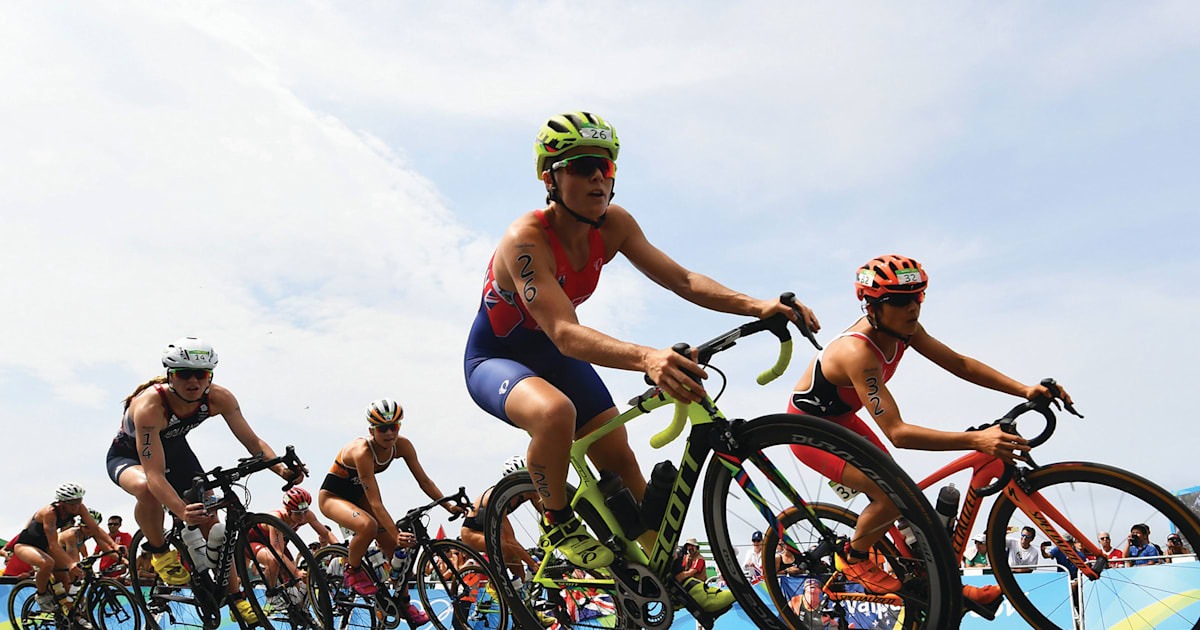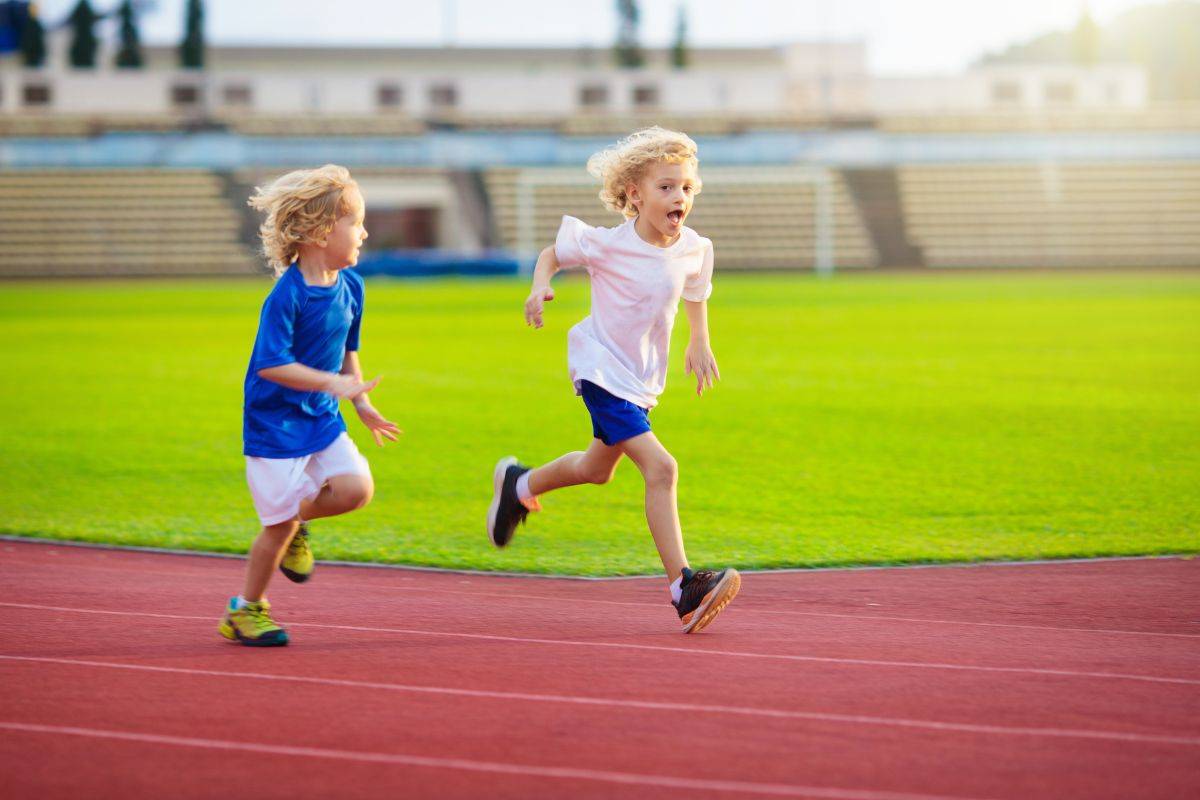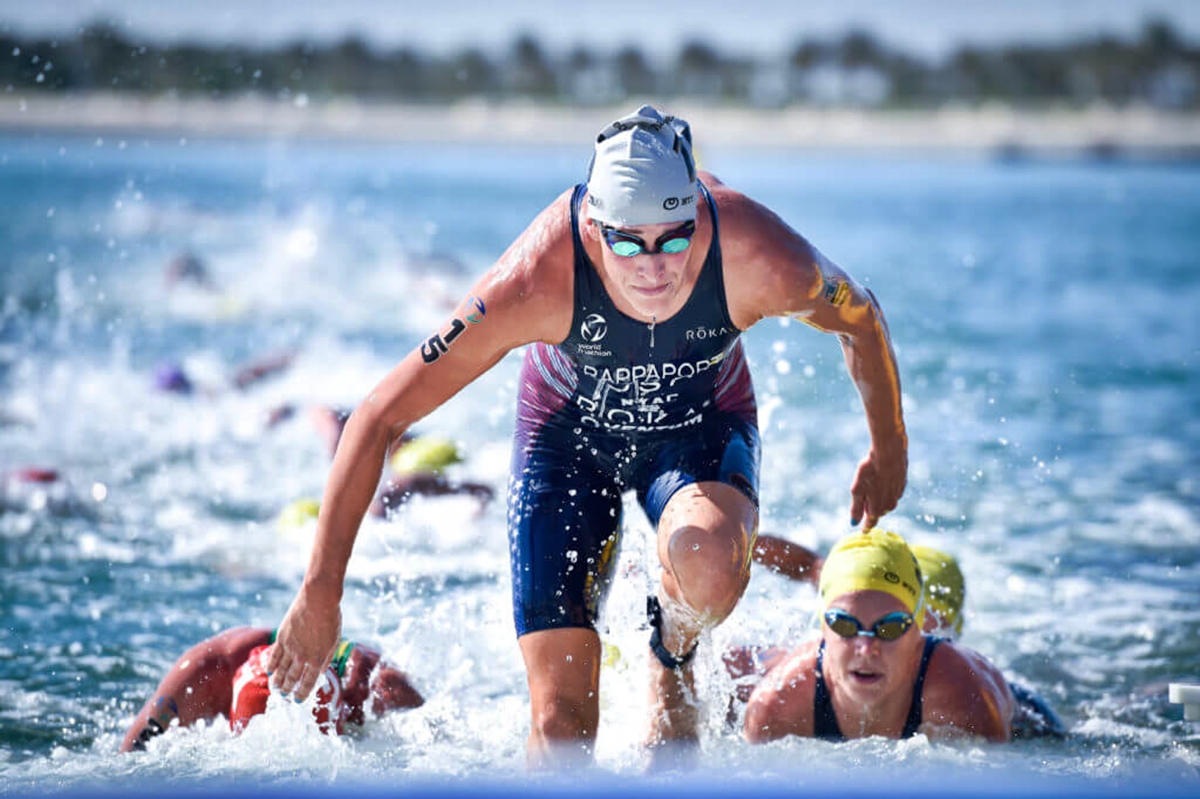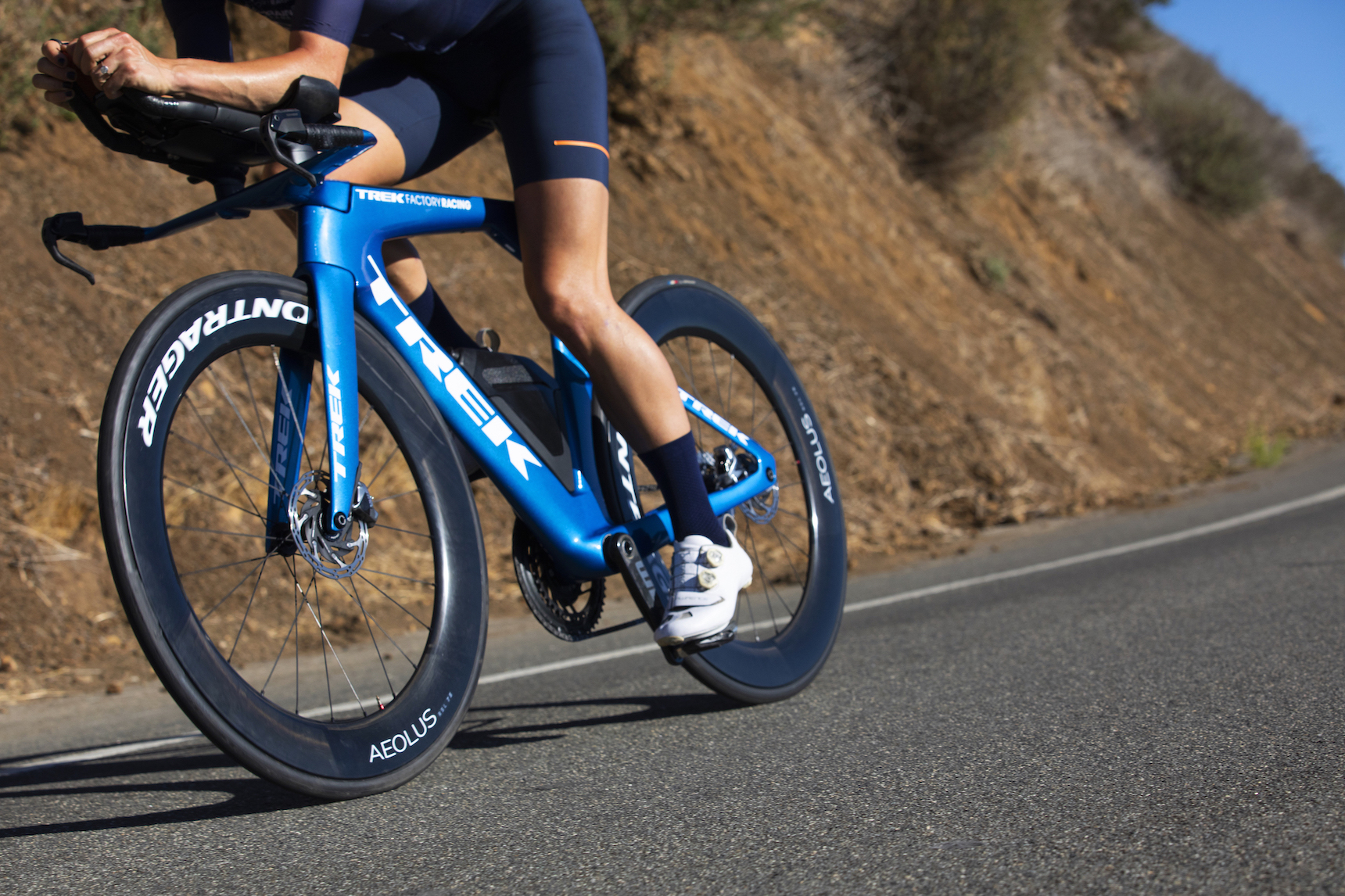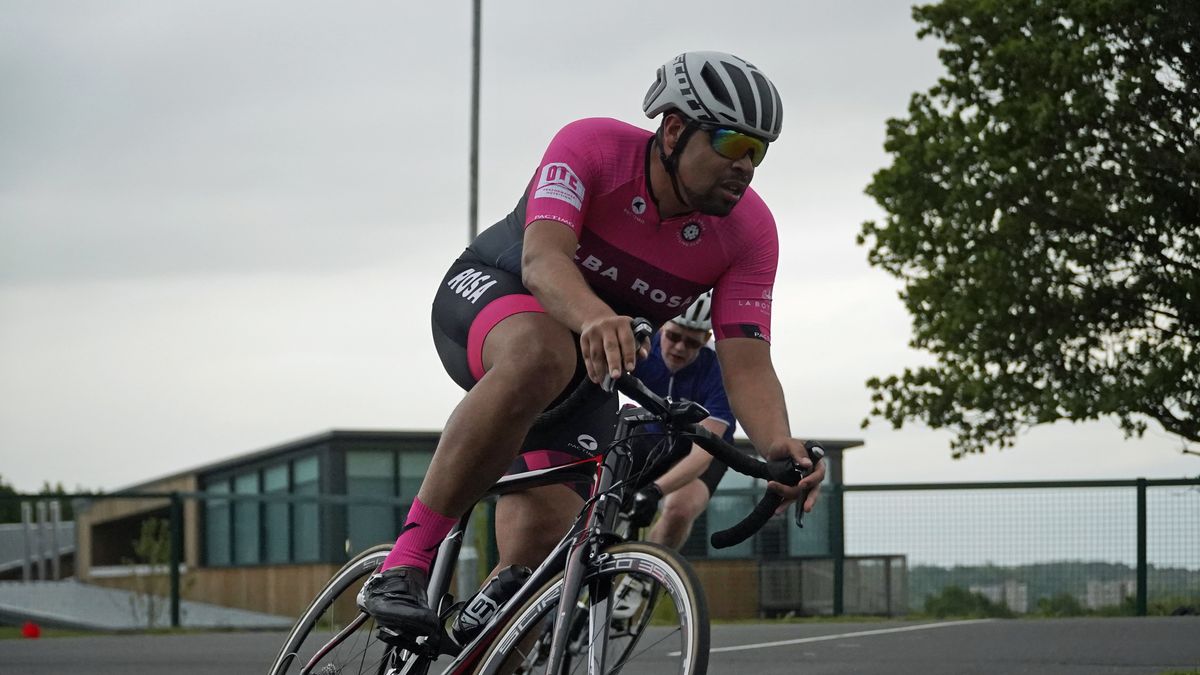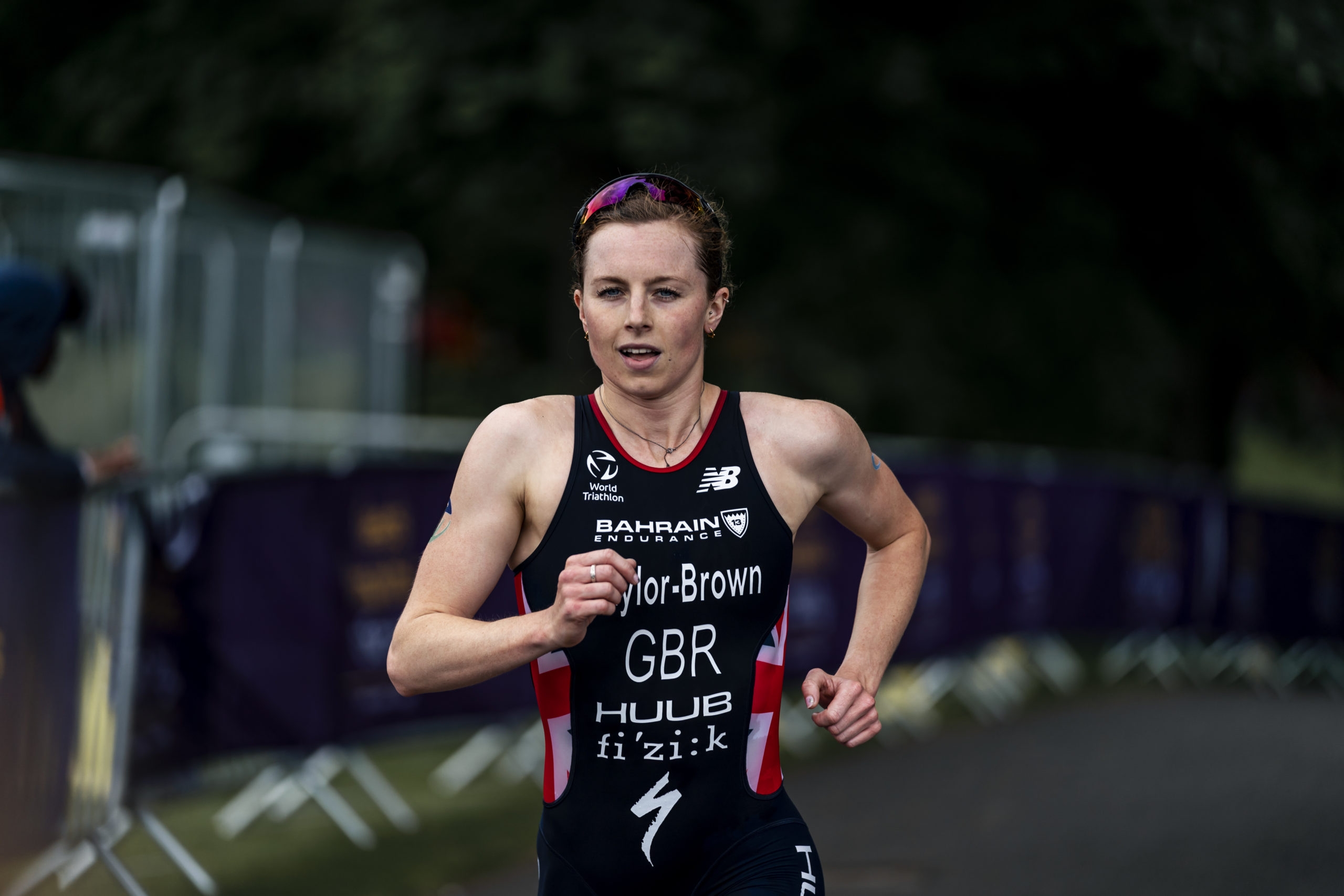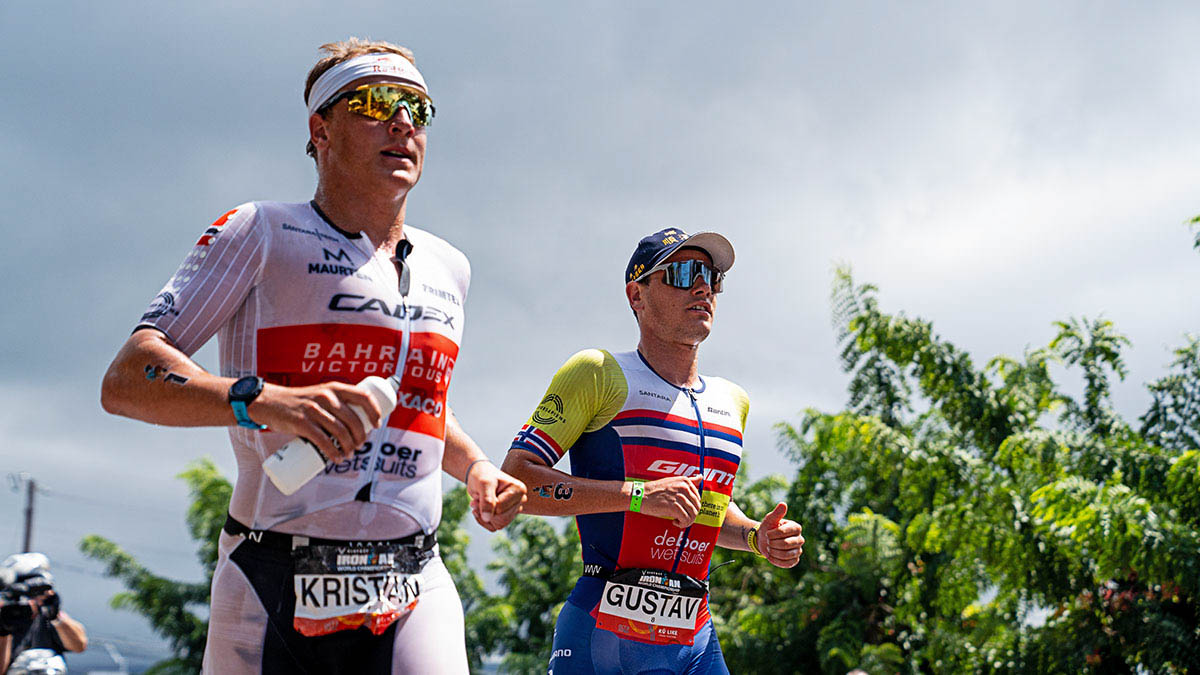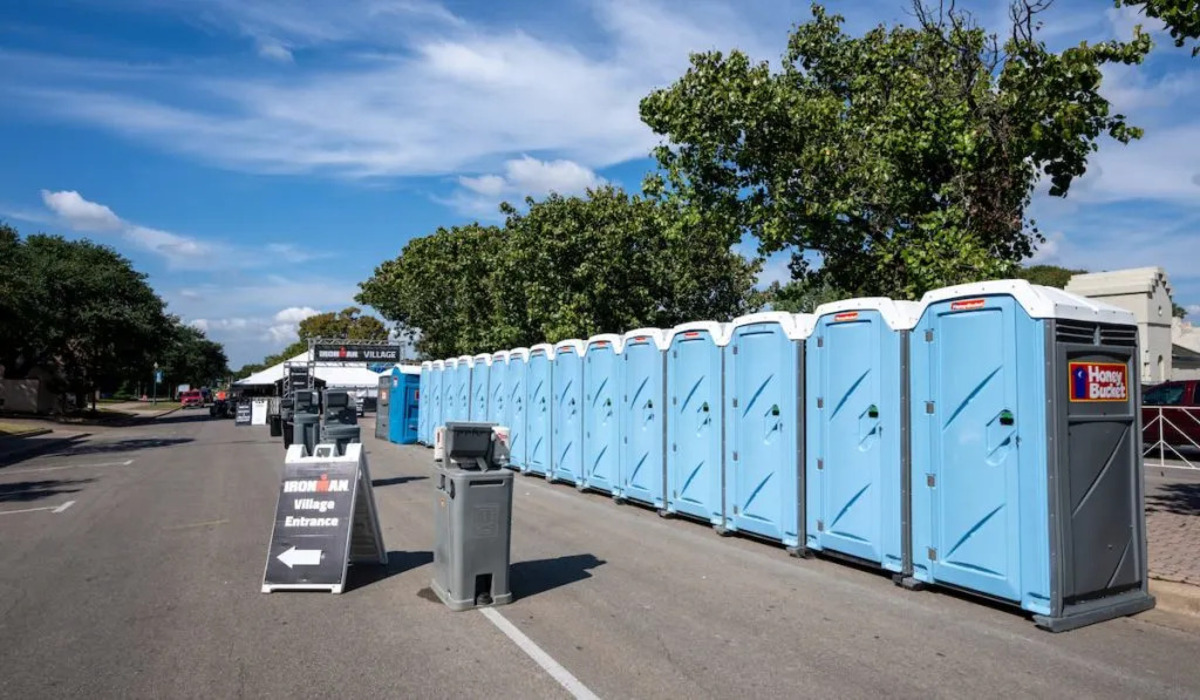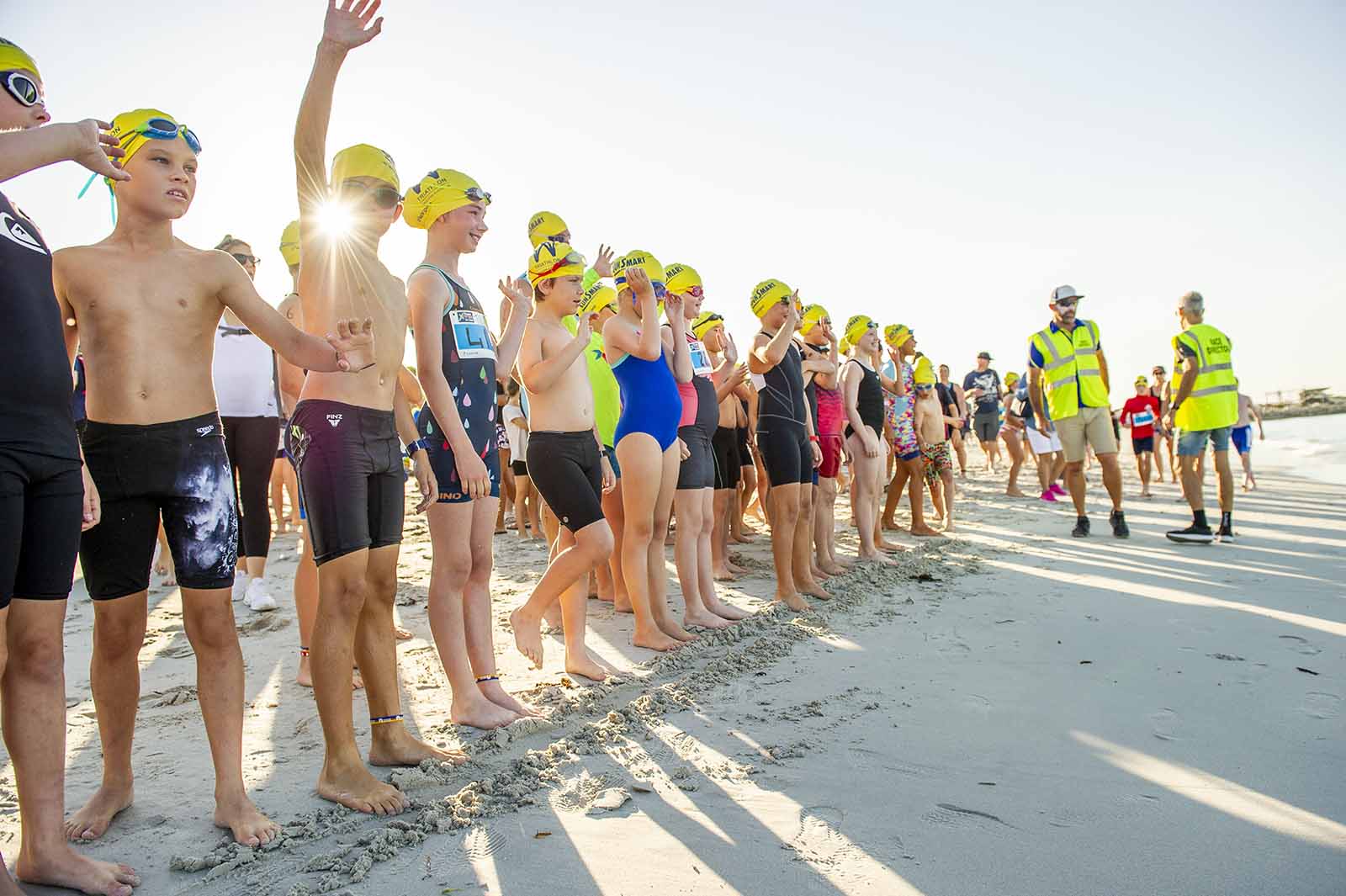

Featured
How Long Is A Children’s Triathlon
Modified: October 3, 2023
Discover the ideal duration of a children's triathlon in this featured article. Find out how long it takes for young athletes to complete this exciting multisport event.
Introduction
Children’s triathlons have gained immense popularity in recent years as a way to promote fitness, sportsmanship, and athleticism among young participants. These multi-disciplinary events, consisting of swimming, cycling, and running, provide a fun and challenging experience for children of all ages.
A children’s triathlon is a modified version of the adult triathlon, incorporating age-appropriate distances to ensure the safety and enjoyment of the young participants. While the exact length of a children’s triathlon can vary depending on factors such as age group and event organizer, they generally adhere to standard guidelines to maintain fairness and consistency.
In this article, we will explore the different distances, age groups, and training strategies associated with children’s triathlons. We will also discuss the importance of age-appropriate triathlon distances and the benefits and challenges of longer distances for young participants.
If you are a parent or coach looking to get your child involved in these exciting events, or if you simply want to learn more about children’s triathlons, you’ve come to the right place. Let’s dive in and discover the fascinating world of children’s triathlons!
What is a Children’s Triathlon?
A children’s triathlon is a multi-sport event designed specifically for young participants. It combines three different disciplines – swimming, cycling, and running – into a single race. These events aim to introduce children to the world of triathlons and promote a healthy and active lifestyle from an early age.
Children’s triathlons follow the same principles as adult triathlons but with modified distances to suit the capabilities and developmental stage of children. The distances are shorter and more attainable, ensuring that young participants can complete the race safely and enjoyably.
In a typical children’s triathlon, the race begins with a swimming leg in a pool, lake, or ocean, depending on the venue. After completing the swim, participants transition to the cycling portion, where they ride on a designated course with supervision and safety measures in place. Finally, the race includes a running leg where kids showcase their endurance and sprint towards the finish line.
These events are often categorized based on age groups, ensuring that children compete with others of similar ages and abilities. This allows for a fair and level playing field, encouraging healthy competition and camaraderie among participants.
Children’s triathlons not only provide an opportunity for kids to participate in a challenging athletic event but also teach valuable life skills. They learn the importance of discipline, goal-setting, time management, and sportsmanship. Furthermore, the supportive and encouraging environment helps boost confidence and self-esteem, fostering a love for physical activity that can last a lifetime.
While children’s triathlons are competitive events, the focus remains on participation and personal achievement rather than winning. The emphasis is on completion rather than rankings, allowing children to have fun, set personal goals, and celebrate their own successes.
Now that we understand what a children’s triathlon is, let’s explore the different distances that are typically involved in these events.
Different Distances for Children’s Triathlons
Children’s triathlons are tailored to the age and abilities of the participants, with varying distances for each age group. The goal is to provide a challenging yet achievable experience for children of all fitness levels. Here are the typical distances for the three disciplines in children’s triathlons:
- Swimming: The swimming distance for children’s triathlons varies based on the age group. For younger children, the swim segment may range from 25 meters to 100 meters, typically completed in a pool. Older children may have longer distances, ranging from 100 meters to 300 meters in open water settings. Lifeguards and safety measures are in place to ensure the well-being of the participants.
- Cycling: The cycling portion of a children’s triathlon takes place on a closed course or a safe route with minimal traffic. The distance can range from 1 kilometer to 10 kilometers, depending on the age group. Younger children may complete a shorter distance on tricycles or bikes with training wheels, while older children tackle longer distances on two-wheel bicycles.
- Running: The running portion typically follows the cycling segment and can range from 500 meters to 3 kilometers. Younger participants may cover shorter distances, while older children demonstrate their endurance and speed in longer runs. The running course is supervised and marked to ensure the safety of the young athletes.
It’s important to note that these distances are approximate and can vary from one event to another. Event organizers take into account the age, skill level, and venue constraints when determining the appropriate distances for each age group.
The varying distances allow children to gradually challenge themselves and progress as they move up through different age groups. It’s an excellent way for them to build their endurance, improve their skills, and gain confidence in their abilities.
Now that we understand the different distances involved in children’s triathlons, let’s delve into the factors that can affect the length of a children’s triathlon.
Factors Affecting the Length of a Children’s Triathlon
Several factors come into play when determining the length of a children’s triathlon. These factors ensure that the event is suitable for the age group and provides a safe and enjoyable experience for all participants. Let’s explore some of the key factors affecting the length of a children’s triathlon:
- Age Group: The age group of the participants plays a significant role in determining the triathlon’s length. Younger age groups, such as 5-7 years old, typically have shorter distances to accommodate their developing physical capabilities. Older age groups, like 12-14 years old, may have longer distances as they progress in their athletic journey.
- Safety Considerations: The safety of the participants is of utmost importance in children’s triathlons. The length of each segment is carefully decided to ensure that young athletes can complete the race without overexertion or exhaustion. Safety measures include lifeguards during the swim, closed cycling courses, and well-marked running routes.
- Venue and Resources: The available venue and resources also influence the length of a children’s triathlon. The size of the pool or body of water for the swim segment, the condition of the cycling course, and the space for the running route all play a role in determining the appropriate distances for each discipline.
- Event Format: The format of the event can also impact the length of a children’s triathlon. Some events may choose to have shorter distances for all age groups to ensure inclusivity and a greater participation rate. Other events may opt for longer distances to provide a more competitive experience for older and more experienced participants.
- Participant Skill Level: The skill level of the participants is taken into consideration when determining the length of a children’s triathlon. The distances are designed to be challenging but achievable for each age group, allowing participants to showcase their abilities and progress in their athletic journey.
By considering these factors, event organizers can create an engaging and well-balanced triathlon experience for young participants. The goal is to provide a safe and enjoyable environment where children can showcase their talents and develop a love for the sport.
Next, let’s dive into the age groups and length categories typically found in children’s triathlons.
Age Groups and Length Categories in Children’s Triathlons
Children’s triathlons are organized into different age groups, ensuring that participants compete with others of similar ages and abilities. These age groups help create a fair and level playing field, allowing children to challenge themselves and strive for personal improvement. Let’s take a closer look at the typical age groups and length categories in children’s triathlons:
- Mini Triathletes (Ages 5-7): This age group is the youngest category in children’s triathlons. The distances for the swim, bike, and run segments are shorter, usually ranging from 25-50 meters for swimming, 500 meters to 1 kilometer for cycling, and 200-500 meters for running.
- Junior Triathletes (Ages 8-10): The junior category is the next step up in children’s triathlons. The distances increase slightly to accommodate the growth and development of participants in this age range. Typical distances for swimming range from 50-100 meters, cycling distances extend to 2-4 kilometers, and running distances range from 500 meters to 1.5 kilometers.
- Intermediate Triathletes (Ages 11-13): The intermediate category introduces longer distances to challenge the capabilities of older children. Swimming distances may range from 100-200 meters, cycling distances extend from 5-8 kilometers, and running distances extend from 1.5-3 kilometers.
- Senior Triathletes (Ages 14-17): The senior category is the final age group before participants transition to adult triathlons. In this category, the distances are further increased to provide a more competitive challenge. Swimming distances can range from 200-400 meters, cycling distances extend from 8-10 kilometers, and running distances extend from 3-5 kilometers.
These age groups and length categories serve as guidelines, and actual distances may vary depending on event organizers and specific event circumstances. It’s important to remember that the focus of children’s triathlons is on participation, personal achievement, and enjoyment rather than winning.
By providing age-appropriate distances and categories, children’s triathlons enable young athletes to develop their skills, push their limits, and have a positive and rewarding experience. The goal is to foster a lifelong love for physical activity and a healthy lifestyle.
Now that we have explored the age groups and length categories, let’s discuss the importance of proper training for a children’s triathlon.
Training for a Children’s Triathlon
Training for a children’s triathlon requires a holistic approach that focuses on developing the necessary skills, building endurance, and ensuring the safety and well-being of young participants. Here are some key considerations for training:
- Begin with an Assessment: Before embarking on a training program, it’s important to assess the child’s current fitness level, abilities, and any specific goals they may have. This assessment will help tailor the training plan to their needs and capabilities.
- Gradual Progression: Training should emphasize gradual progression to prevent overexertion and ensure that young athletes build endurance and strength safely. Start with shorter distances and gradually increase the duration and intensity of training sessions as the child becomes more comfortable and confident.
- Multi-Disciplinary Training: Children’s triathlon training should include swim, bike, and run sessions to develop proficiency in each discipline. Incorporate activities such as swimming drills, cycling on different terrains, and interval running to improve specific skills and build overall fitness.
- Strength and Conditioning: In addition to practicing individual disciplines, strength and conditioning exercises play a vital role in injury prevention and overall performance improvement. Focus on exercises that target the core, legs, and upper body, helping build muscular endurance and overall stability.
- Balance Rest and Recovery: Rest and recovery are essential for young athletes to prevent burnout and promote healthy growth and development. Ensure that the training plan includes scheduled rest days and encourages proper sleep, hydration, and nutrition.
- Practice Transitions: Triathlons require seamless transitions between each discipline. Devote training sessions to practicing transitions, including moving from swimming to cycling and from cycling to running. This will improve the child’s efficiency and confidence during the race.
- Coach or Parental Guidance: Enlist the help of a knowledgeable coach or experienced parent to guide the child’s training. They can provide expertise, support, and proper technique instruction to ensure that the training is effective and safe.
- Enjoyment and Fun: Encourage a positive training environment and make it enjoyable for the child. Incorporate activities, games, and challenges to keep the training sessions engaging and fun. Celebrate milestones and achievements along the way to boost the child’s motivation and self-confidence.
Remember, the primary goal of training for a children’s triathlon is to promote participation, skill development, and a lifelong love for physical activity. Prioritize the child’s enjoyment and well-being throughout the training process.
Now that we have covered the importance of training, let’s discuss why it is crucial to have age-appropriate triathlon distances for children.
Importance of Age-Appropriate Triathlon Distances
Age-appropriate triathlon distances are essential in ensuring the safety, enjoyment, and long-term participation of children in the sport. These distances are carefully designed to align with the physical and cognitive capabilities of different age groups. Here are some reasons why age-appropriate triathlon distances are crucial for children:
- Safety: The safety of young participants is of paramount importance. Age-appropriate distances lessen the risk of overexertion and fatigue, reducing the likelihood of injuries or accidents during the race. Children can comfortably complete the race without pushing themselves beyond their limits.
- Developmentally Appropriate: Children’s bodies and abilities undergo continuous development as they grow. Age-appropriate distances ensure that children can participate in a triathlon that challenges them without overwhelming them. It allows them to build endurance, improve skills, and progress in a healthy and controlled manner.
- Engagement and Enjoyment: Triathlons should be enjoyable and engaging for all participants. By providing age-appropriate distances, children can actively participate and complete the race with a sense of accomplishment. This fosters a positive experience and encourages long-term involvement in the sport.
- Building Confidence: Achieving goals and milestones is a crucial part of a child’s development. Age-appropriate distances allow children to set and achieve realistic targets, boosting their self-confidence and self-esteem. This sense of accomplishment carries over into other areas of their lives and encourages them to pursue new challenges.
- Encouraging Sportsmanship: Age-appropriate triathlon distances promote a sense of fairness and friendly competition among participants. When children compete with others in their age group, they can gauge their performance relative to their peers. This fosters a spirit of sportsmanship, camaraderie, and mutual support among young triathletes.
- Long-Term Participation: The ultimate goal of children’s triathlons is to nurture a lifelong love for physical activity and a healthy lifestyle. By offering age-appropriate distances, children are more likely to enjoy the experience, feel a sense of accomplishment, and continue participating in triathlons throughout their lives.
Event organizers, coaches, and parents play a vital role in maintaining age-appropriate triathlon distances. It is important to prioritize the well-being, development, and enjoyment of the participants when making decisions about race distances.
Now that we understand the importance of age-appropriate distances, let’s explore the benefits and challenges of longer triathlon distances for children.
Benefits and Challenges of Longer Triathlon Distances for Children
Longer triathlon distances in children’s events present both benefits and challenges for young participants. While these distances may provide additional opportunities for growth and challenge, it is crucial to strike a balance to ensure the well-being and enjoyment of the children. Let’s explore the benefits and challenges of longer triathlon distances for children:
- Benefits:
- Building Endurance: Longer distances offer children the chance to build their endurance and stamina. It allows them to push their limits and develop the mental and physical fortitude necessary for longer races.
- Developing Mental Resilience: Longer distances present a mental challenge for children, teaching them perseverance, determination, and resilience. They learn to overcome obstacles and develop mental strength as they strive to complete the race.
- Increased Sense of Achievement: Completing a longer triathlon distance provides a significant sense of accomplishment and boosts the child’s self-confidence. It demonstrates their ability to take on challenges and achieve their goals.
- Preparation for Future Events: Longer distances in children’s triathlons can serve as a stepping stone for future participation in more competitive or adult-level events. It prepares them for the physical and mental demands of longer triathlons later in life.
- Challenges:
- Physical Strain: Longer distances require greater physical exertion, which can strain a child’s developing body. It is essential to ensure that the child is adequately trained and prepared to handle the increased demands of a longer race.
- Increased Risk of Overexertion: Pushing children to participate in longer distances without proper training and preparation can increase the risk of overexertion, fatigue, and potential injuries. It is crucial to prioritize the child’s safety and well-being.
- Decreased Enjoyment: For some children, longer distances may become overwhelming and detract from the enjoyment of the triathlon experience. It is important to assess each child’s individual comfort level and ensure the race remains a positive and enriching experience for them.
- Developmental Considerations: Longer distances must align with the child’s developmental stage to prevent any negative impact on their growth, both physically and psychologically. Age-appropriate distances continue to be important even as children progress to longer races.
When considering longer triathlon distances for children, it is vital to weigh the benefits against the challenges and make informed decisions that prioritize the child’s safety, well-being, and enjoyment of the sport.
Now that we have explored the benefits and challenges of longer distances, let’s conclude our discussion on children’s triathlons.
Conclusion
Children’s triathlons are a fantastic way to introduce young participants to the world of multi-sport events, promoting fitness, sportsmanship, and a love for physical activity. By providing age-appropriate distances, these events ensure that children can participate safely, enjoyably, and in a way that aligns with their developmental needs.
The different distances for swimming, cycling, and running in children’s triathlons cater to each age group’s abilities, allowing them to challenge themselves and progress as they grow. These events foster a positive environment where children can set goals, showcase their skills, and develop confidence both on and off the racecourse.
Proper training for children’s triathlons is essential and should focus on gradual progression, multi-disciplinary training, and fostering enjoyment and engagement. By taking a holistic approach to training, children can develop the physical and mental attributes needed to tackle the challenges of a triathlon.
It is crucial for event organizers, coaches, and parents to prioritize the well-being, safety, and enjoyment of the young participants. By considering factors such as age group, safety considerations, venue resources, and participant skill levels, they can create a fair and rewarding experience for all involved.
Whether children participate in shorter or longer distances, the benefits of age-appropriate triathlons extend beyond race day. Children gain valuable life skills, learn sportsmanship, build resilience, and cultivate a lifelong love for physical activity.
As children’s triathlons continue to grow in popularity, it is important to remember that the focus remains on participation, personal growth, and enjoyment. By nurturing a positive and inclusive environment, we can inspire the next generation of triathletes and foster a love for a healthy and active lifestyle.
